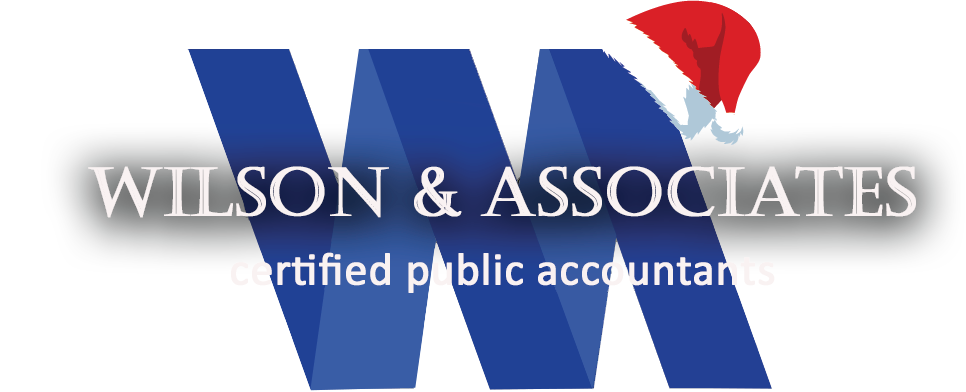Automation in Accounting: Benefits and Challenges
In today’s digital-first business world, automation in accounting has become a strategic advantage rather than a luxury. From streamlining routine tasks to enhancing data accuracy and compliance, accounting automation is reshaping how companies manage finances—and how firms like Wilson & Associates CPA deliver value to clients.
Yet, while the benefits are undeniable, there are also real-world challenges—from software integration to data security—that businesses must navigate.
In this post, we’ll break down the core advantages and potential pitfalls of accounting automation, and provide guidance on how to implement it effectively in 2025 and beyond.
What Is Accounting Automation?
Accounting automation refers to the use of software, artificial intelligence (AI), and cloud-based tools to perform traditional accounting functions with minimal human intervention. These may include:
-
Invoice processing
-
Expense tracking
-
Bank reconciliations
-
Financial reporting
-
Payroll management
-
Tax calculations and e-filing
-
Workflow approvals
📊 Popular platforms include QuickBooks Online, Xero, Gusto, Bill.com, Expensify, and AI-enabled add-ons for deeper analytics and forecasting.
Benefits of Automation in Accounting
Increased Efficiency and Speed
Manual data entry and reconciliation are time-consuming and error-prone. Automation:
-
Reduces hours spent on repetitive tasks
-
Enables real-time financial insights
-
Allows staff to focus on high-value strategic work
⏱️ Result: Faster month-end closes, less burnout, and more productive accounting teams.
Improved Accuracy and Compliance
Software minimizes human errors in:
-
Calculations
-
Data transfers
-
Regulatory filings
Compliance is enhanced through:
-
Built-in tax rules
-
Audit trails
-
Timely reminders for deadlines (e.g., payroll, sales tax, Form 1099)
📣 Bonus: Reduced risk of IRS penalties and DOL audit triggers.
Cost Savings
Though there’s an upfront investment, automation:
-
Reduces the need for additional headcount
-
Cuts billable hours from outsourced providers
-
Decreases financial errors that cost money
📉 Businesses can see long-term ROI through increased efficiency and fewer compliance costs.
Real-Time Visibility and Decision-Making
Cloud-based platforms provide live dashboards with KPIs like:
-
Cash flow
-
Outstanding receivables/payables
-
Budget-to-actual comparisons
🧠 Better data = better decisions, especially during periods of uncertainty or rapid growth.
Enhanced Security and Audit Readiness
With role-based permissions and digital backups, automation enhances:
-
Data integrity
-
Access control
-
Document retention
🛡️ It’s easier to prepare for audits or respond to regulatory inquiries when your system is centralized and searchable.
Challenges of Accounting Automation
System Integration and Compatibility
The Issue: Legacy systems often struggle to “talk” to modern platforms.
This creates problems like:
-
Data silos
-
Duplicate entries
-
Integration failures
✅ Solution: Use APIs or choose an all-in-one platform with native integrations (e.g., accounting + payroll + expense management).
Learning Curve and Resistance to Change
Even the best software fails if your team doesn’t adopt it.
Challenges include:
-
Lack of training
-
Staff discomfort with technology
-
Inconsistent workflows
✅ Solution: Partner with an advisor or CPA firm to provide training, SOPs, and accountability during rollout.
Initial Costs and Setup Time
Upfront costs can include:
-
Subscription fees
-
Implementation services
-
Staff time during migration
While automation is an investment, poor setup can lead to downtime, misreporting, or bad data migration.
✅ Solution: Work with a CPA firm or tech consultant who can design a cost-efficient implementation plan.
Data Privacy and Cybersecurity Risks
Automation platforms store sensitive financial and employee data.
Risks include:
-
Data breaches
-
Poor password hygiene
-
Vendor vulnerability
✅ Solution: Choose SOC 2-compliant software, enforce two-factor authentication (2FA), and establish an IT policy for finance systems.
Over-Reliance on Automation
While automation reduces human error, it can increase the risk of unmonitored errors—especially if data flows through multiple tools without validation.
✅ Solution: Regularly review financials, reconciliations, and audit logs with a CPA to catch errors early.
Implementation Tips: How to Adopt Accounting Automation Successfully
| Step | Action |
|---|---|
| 1 | Assess current pain points and workflow inefficiencies |
| 2 | Choose tools that integrate well with existing systems |
| 3 | Involve your CPA or CFO in the planning process |
| 4 | Train staff thoroughly and standardize processes |
| 5 | Schedule quarterly reviews to evaluate ROI and accuracy |
Pro Tip: At Wilson & Associates CPA, we provide automation advisory services, guiding businesses from software selection to workflow mapping and compliance review.
Final Thoughts
Accounting automation is no longer the future—it’s the present advantage. Businesses that embrace automation in 2025 will not only improve efficiency and accuracy, but also gain the strategic visibility needed to grow confidently.
But success lies in smart implementation, thoughtful training, and continuous oversight.
Ready to explore accounting automation? Wilson & Associates CPA offers expert guidance to help you modernize your back office, reduce manual labor, and make better financial decisions.
